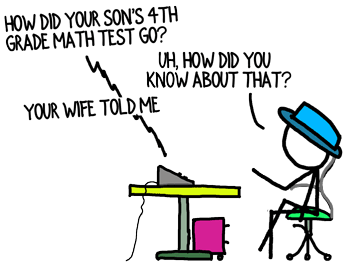5 Ways to Lavish Consulting Clients With Attention, Without Adding Work or Time
Imagine your consulting clients are donuts (this is helpful in many, many ways) and the attention you give them is glaze. Obviously, the more attention you slather on your clients, the better.
Consulting clients love to be attended to. Substantial, personal, genuine attention creates happy, loyal clients. Clients who forgive occasional mistakes, offer your consulting firm projects year after year, and refer your consulting firm to other prospects.
But as a consultant, you rightly worry: Doesn’t adding all that glaze take time? Isn’t it expensive? And fattening? Not necessarily.
First, metaphorical donuts have zero calories. So, being sweet to your consulting clients is okay for your waistline.

Almost as importantly, lavishing attention on your clients requires minimal time. Perhaps a couple of hours over the course of a six-month engagement.
Before we discuss some ways to be attentive to your consulting clients, let’s make an important distinction: Attentiveness and Responsiveness are different.
- Attentiveness is how (and how often) you focus on your clients.
- Responsiveness is how you react to requests from your consulting clients.
Attentiveness and Responsiveness both improve your consulting clients’ experience; however, they require different processes and infrastructure, and you should think of them separately. In this article, we’re only discussing Attentiveness.
5 Ways to Lavish Attention on Consulting Clients
If you often visit your client’s office, then checking in is obvious and expected. However, if you’re rarely onsite, then build regular, client-focused touches into your project plan. These are different from project status updates. A “How’s everything going?” email every couple of weeks takes only moments. Demonstrate that the important events in your clients’ lives matter to you too. They can be personal (birthday, anniversary, kickoff of hockey season) and professional (board meeting, personnel review, annual picnic). At the very least, ask how these extraordinary dates went for your clients. At most, offer to help if the big milestone is in the future. (You can peruse a presentation, for instance, in a few minutes.) If your client prefers one-line emails, then explicitly acknowledge that’s why your note to him is only 30 words. (Even if your client prefers thin media, you still need occasional phone or in-person conversations.) Put your client’s name into Google alerts and forward an attaboy when you see him in the news. Or give him a shoutout on LinkedIn when he’s recognized for something—even if his recognition is in a company newsletter. Pay attention when you do talk with your client—turn off your cell phone, shut down your browser, create an image in your mind of what your client is saying. Then demonstrate your listening by reflecting the emotion and content.Check In Frequently
Note Important Milestones

Overtly Honor Preferences
Be a Fan
Listen Hard
In a future article, we’ll talk about ways to be responsive. We’ll probably talk about donuts too. For now, though, what are some ways you shower attention on your clients?
Text and images are © 2024 David A. Fields, all rights reserved.

 David A. Fields Consulting Group
David A. Fields Consulting Group 

David,
I send articles that I find online to clients along with a personal note as to why I think the article is relevant to them. It keeps me top of mind and almost always gets a response. It also frequently leads to another business engagement. I look at it as a “soft” sales call.
I’m glad you contributed what you do, Dan, because it’s a great practice. It sounds like you use this approach with prospects as well as with active clients, and it’s very effective with both groups.
Bring them titbits that I have picked up elsewhere at no cost. For instance tax law changes, market fluctuations. Things that are information only (and therefore require no input from me) but may be very useful to them.
As consultants and trusted advisors, we can share plenty of advice and observations that doesn’t wander into the realm of free work. (Most pearls of wisdom are outside our paid, area of expertise.) You’ve highlighted a very good point, Carl.
Great article David. I’m always amazed at the time you invest in your followers…feels like today you give me a jelly-filled, chocolate glazed donut covered in sprinkles. Thanks!
The folks who read these articles, attend my programs, and grant me the honor of working with them directly, are smart cookies (…er, donuts?). As a result, I’m actually investing in opportunities to learn and grow with peers and to build meaningful relationships.
(As a side bonus, consultants frequently give me chocolate… which I’ve pretty sure indicates I’ve reached the pinnacle of happiness.)
Thank you, David, for being a contributor to the discussion.
The idea of a Google alert is great – I just set those up for my current clients. Thank you!
I also try to provide value by introducing my clients to others who can help grow their businesses, even if the introduction doesn’t directly and immediately benefit me. Facilitating relationships (with a double opt-in, of course) that will assist them in achieving their goals or cultivate supportive communities is huge and, I think, pays out exponentially down the road.
Introductions implicitly say, “I think you’re important, and regard you highly enough to risk one of my other relationships by connecting you to it.” It’s an expression of trust, attention and regard, all of which strengthen the bond between your and your client.
You’ve added a great attention-giving method to the list, Linne.